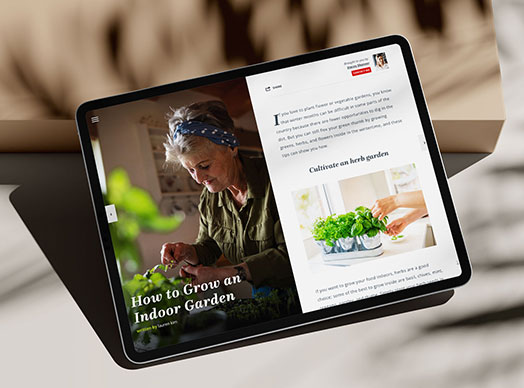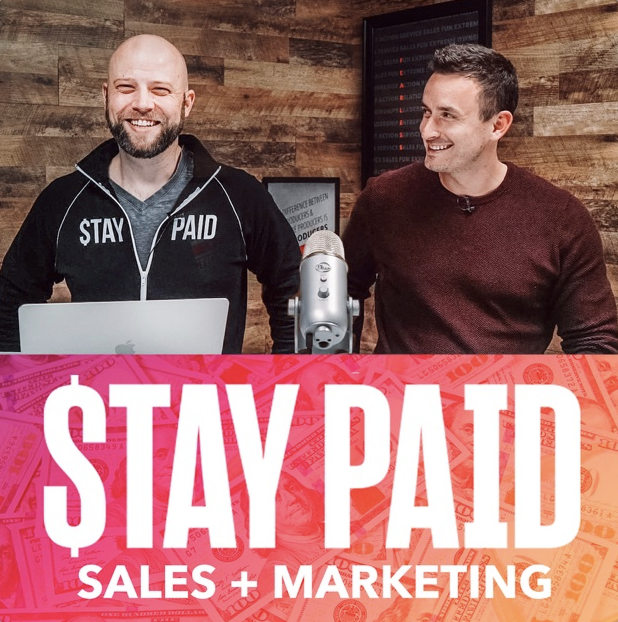Ep. 239: How to ask for REFERRALS the right way, with Barb Betts
How to Develop a Relationship Marketing System
Word-of-Mouth is Not a System
Who should listen: This episode is for professional service providers who want to understand how to operationalize their relationship marketing strategy.
Key point: Relationship marketing requires authenticity; it’s not for everyone. If you don’t have a prospect’s trust, then not even your family will hire you. Being consistent is the key to successful relationship marketing.
Action item: Amend your language. Rather than ask for referrals, start asking clients for “introductions” and if they would “connect” you with other people you can help.
Note: While Stay Paid never pays its guests for their participation, this week’s guest’s belief in relationship marketing, and her dedication to run her business by following its principles, are so in line with what we consistently tell our listeners that we feel compelled to let you know that we did not pay her for this interview, nor did we coach her about what to say.
Some of you may not know this, but Stay Paid is produced by ReminderMedia. We’re a company of marketing experts specializing in relationship marketing. And if you’ve listened to Luke and Josh more than once, then you know we’re passionate about helping our 100,000+ clients build and nurture the relationships they have with the people in their sphere.
What’s interesting is that we don’t spend as much time selling our relationship marketing tools as we do explaining why relationship marketing is vital to our clients’ success and coaching them on how to create an overall relationship marketing plan.
This week’s Stay Paid guest, Barb Betts, understands why relationship marketing is important. Notably, she also recognizes why having a relationship marketing system is essential if it’s going to work. Barb understands these facts so thoroughly, acts on them so perfectly, and is so successful because of her commitment to them, that she named her podcast Real Estate by Relationship.
We’ll get to what a relationship marketing plan might look like in a minute. First, for the benefit of those who may not know what relationship marketing is, we want to explain what is meant by relationship marketing and how it differs from other types of marketing.
What is relationship marketing?
To understand what relationship marketing is, it may be best to start with what it isn’t.
Most advertising and marketing practices focus on completing transactions, where a consumer sees an ad or watches a commercial and then buys the advertised product. Instead of creating short-term transactions that lead to the purchase of a single product, relationship marketing focuses on interacting with clients in a way that maximizes the value of the relationship they have with a business.
The goals of relationship marketing include:
- Long-term relationships with clients who engage in repeat business;
- Leads generated by referrals from happy and loyal clients;
- A reduction in expenses related to attracting new clients.
In addition to calculating the ROI of your marketing, repeat business accounts for the lifetime value of acquiring and keeping a client. For example, imagine you’re a real estate agent, and you spend $8,000 over six years maintaining a relationship with a client. The time comes for them to move, and because you’ve remained top of mind, they hire you to sell their current home and buy their next.
That $8,000 becomes a drop in the bucket.
Now, let’s assume that same client refers you to four other people. Three of them become names you can add to your database and leads you can nurture until they are ready to buy or sell. The fourth, however, needs an agent to help them find a home now.
That’s another 6% you can trace back to your initial $8,000 marketing spend.
Finally, you’ve likely heard it’s less expensive to keep an employee than it is to find, hire, and train a new one. The same is true for retaining clients versus attracting new ones.
Emmett C. Murphy and Mark A. Murphy, the authors of Leading on the Edge of Chaos: The 10 Critical Elements for Success in Volatile Times, [#ad] wrote that a 2% increase in customer retention can decrease a company’s costs by as much as 10%. That’s good news for companies that use relationship marketing.
Creating your relationship marketing program
The first thing to know about relationship-based marketing is that it’s not for everyone.
The key term in relationship marketing is relationship, and relationships requires authenticity. Why? Because, while not everyone wants an agent as their best friend, if you aren’t sincerely invested in knowing your clients and having them know, like, and trust you, then you can’t build relationships that last.
Trust in relationship marketing is what makes the wheels turn.
So then, how do you create and maintain trusting relationships with your clients and prospective clients?
1. You need to be consistent
Let’s think about this rationally for a minute.
If you were building a relationship with someone, and they frequently broke promises, would you trust them?
If someone were to reach out to you only when they needed something from you, would you trust them?
If someone told you one thing, then routinely changed the story and told you something different, would you trust them?
The answer is an obvious no.
Let’s think about it another way.
If you were dating someone, would you expect them to marry you after one date?
Another obvious no.
One more . . . if you were making the single most important investment of your life, let’s say buying a home, would you turn the process over to someone you hadn’t met and didn’t know anything about?
Absolutely not.
To create and maintain trusting relationships with the people in your sphere, you need to be in consistent contact with them. Staying in front of your contacts allows them to become familiar with you. Familiarity gives people the chance to know you and to decide if they like you. Given time, familiarity leads to trust.
Barb makes sure that everyone on her “list of relationships” (she doesn’t call it a database) receives something of value from her every month—no skipping and no exceptions. She tends to favor postcards, but she also uses:
- email videos
- social media that includes video
- telephone calls
- text messages
- direct messaging
- Facebook Messenger
2. You can’t always be about business
If the objective of relationship marketing is to build long-term relationships, and relationships are about authenticity, then creating emotional connections with your sphere is a natural requisite.
And you can’t create an emotional connection among the people in your sphere to you, your business, or your brand by always talking shop. As Barb said, “No one cares about your listings.”
What you send to your sphere needs to be professional, but you can make it personal as well. This is where social media is your best friend. Instagram stories, Facebook Live, postings photos—these and more allow you to reveal your personality.
And don’t be concerned about mistakes or flubs. It’s just you being you, and that’s the entire point.
3. You need to take care of your best clients
It’s not reasonable to expect that all your clients will be equally engaged with you. Clients will range from those you never want to work with again to those who become some of your best friends. Barb makes sure she knows who’s who, and she reaches out accordingly.
Barb uses her database to help sort her clients so that she can engage them with the appropriate level of relationship marketing activities:
- Group 5 travels first class. They are her raving fans. They routinely send her referrals, engage with her on social media, and are some of her closest connections. They are her “walking and talking billboards.” They are her best friends; they connect multiple times a month; she is a part of their lives, and they are a part of hers. They get invitations to the biggest client appreciation parties and they attend. She ensures she reaches out to these people at least once per month.
- Group 4 travels business class. They are her connectors. These are similar to those in Group 5, with a little less intensity. They may be the people who don’t share every social media post or open every email, but who are still cheering advocates. They also get the party invitations. This group also receives at least one touchpoint each month.
- Group 3 travels economy. These are people who Barb likes and who like her. They will hear from Barb once a quarter, and, along with Group 2, be invited to the serve yourself pizza parties.
- Group 2 travels on stand-by. She may recognize people in this group, but she probably can’t recall their name. She might have sold them a house years ago, but lost touch with them over time.
- Group 1 are people she doesn’t want to do business with again.
The point of Barb’s ranking system isn’t just to know who to invite to what. It’s part of her overall relationship marketing system, where she has procedures and processes in place that let her know who gets what and when. And it’s her daily job to work that system.
Enjoy the upbeat conversation in this week’s interview, hear more about Barb’s approach to relationship marketing, and additional ways she engages with the people in her sphere. You’re guaranteed to walk away with at least one new idea to systematize the way you connect with your sphere.
Connect | Resources
Instagram: @barbbetts
Website: The Betts Realty Group
We are a participant in the Amazon Services LLC Associates Program, an affiliate advertising program designed to provide a means for ReminderMedia to earn a small fee by linking to Amazon.com and affiliated sites.















 Soundcloud
Soundcloud iHeart Radio
iHeart Radio Spotify
Spotify Spotify
Spotify


